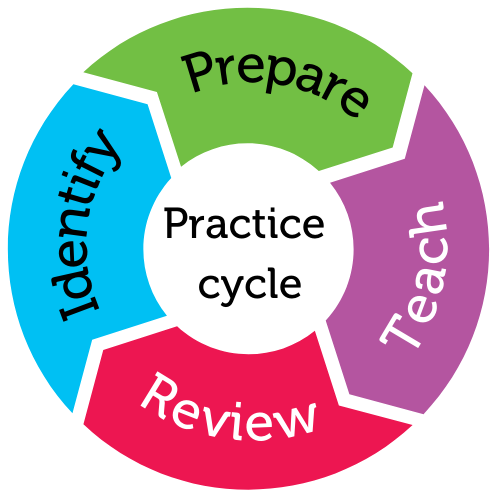
For student year
Helps students to
Helps teachers to
Summary
Some students may find presenting oral assessments difficult for a variety of reasons. These could include social anxiety, stuttering, or language difficulties and may lead to students avoiding and/or underachieving when making oral presentations. Being flexible about how students present oral tasks can make the difference between accurate or inaccurate assessment performance. Offering alternatives, such as having the student audiotape or video their presentation at home or present to the teacher alone, will assist these students to accurately demonstrate their academic abilities.
How the practice works
Watch this video to learn about this practice
Duration 2:55
Australian Professional Standards for Teachers related to this practice
1.5 - differentiate teaching to meet the specific learning needs of students across the full range of abilities
4.1 - support student participation
5.1 - assess student learning
For further information, see Australian Professional Standards for Teachers AITSL page
Preparing to teach
By taking away the oral presentation part of the assessment, students are better able to demonstrate what they have learnt.
When identifying which adjustments you will discuss with the student, take into account the students' strengths, their level of language ability, their anxiety and self-confidence.
Examples of adjustments include:
- submit a script of their PowerPoint presentation
- submit a PowerPoint presentation only
- have a peer present the presentation that the student has prepared.
Once a student has gained confidence, use a ‘step ladder’ approach, and discuss the following options with the student:
- the student presents a shorter presentation to the class
- the student films the presentation at home and submits it as a digital file
- the student presents the assignment only to the teacher or to a small group of peers that the student trusts.
Remember to explicitly teach students how to prepare for and conduct the adapted oral presentation.
It is also worthwhile considering some of these options for a variety of students who typically would avoid oral assessments.
- Consider if an oral presentation is suitable. To facilitate student success, it may be more appropriate to meet the learning outcomes through alternative assessment options.
- Write down the adjustments that students can choose between.
- Use exemplars of the assessment adjustments while presenting these as choices to the student (see practice: Create assignment exemplars).
It works better if…
- students are provided with regular feedback and corrective opportunities
- students are consulted about the types of assessment tasks they prefer.
It doesn’t work if…
- students feel inferior or stigmatised for not doing oral assessments
- students are not offered a choice of assessment options.
In the classroom
Step 1: Discuss options
Present the possible options for adjustments:
- script with their PowerPoint presentation
- PowerPoint presentation only
- shorter presentation to the class
- film the presentation at home
- present to the teacher only
- present to a small group of safe peers.
Students choose their preferred way to present the oral assignment.
Step 2: Provide written task instruction
Provide a written task instruction outlining the adjusted task.
Step 3: Provide explicit instruction
Provide explicit instruction on how to plan and structure oral presentations to all students. For example, how to prepare prompts.
The video provides more information on prompting.
Duration 3:17
Step 4: Provide feedback and positive reinforcement
Provide feedback and positive reinforcement for students who attempt oral assessments (see practice: Respond constructively to student behaviour).
Practice toolkit
Practice implementation planner template
We know that it is not always easy to keep track of what is working and what is not. So, we have created this template for you to record and reflect on what you are doing to help you create a more inclusive classroom. The implementation planner contains:
- Guidance around goal setting
- Reflection section (What worked, didn’t work and what to change and next steps.)
- Prompting questions
Implementation planner template
Implementation planner with examples
Set your professional learning goal for:
Adjust oral assessments for student success
Benefits of goal setting
Setting, working towards, and reflecting on goals helps you grow professionally and improve your practice. You can access AITSL learning resources for teachers to learn more about:How to set goals
The Australian Institute for Teaching and School Leadership recommends using the SMART matrix to frame your goal setting.SMART goals refers to goals that are:
- Specific
- Measurable
- Achievable
- Relevant
- Time-phased
Resources
Adjust oral assessments for student success - Practice Brief
Related Practices

Create assignment exemplars
TEACHING PRACTICE
For student years
Helps students to

Respond constructively to student behaviour
TEACHING PRACTICE
For student years
Helps students to
This practice is from the core research project
Learning Cycle

